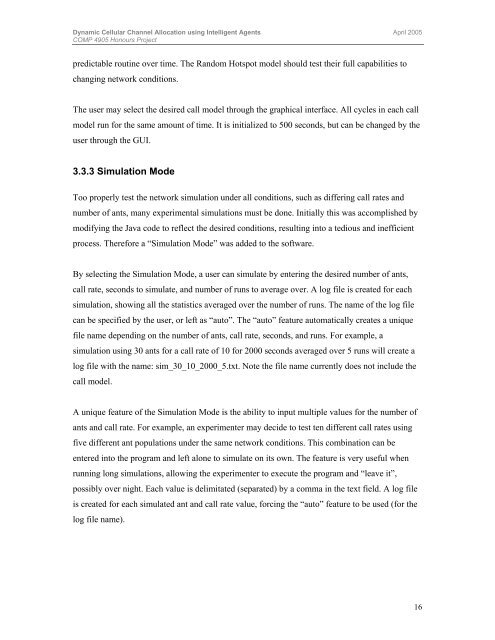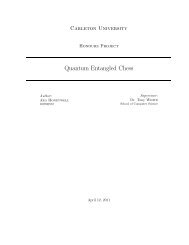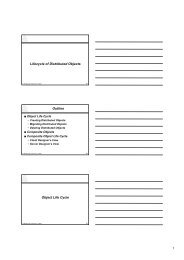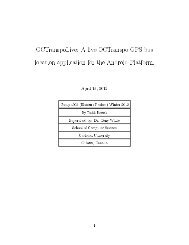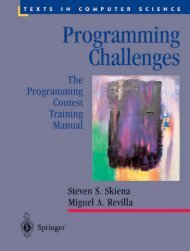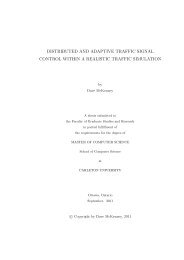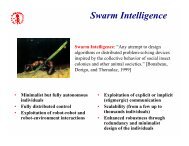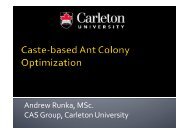Gayan Abeysundara - Complex Adaptive Systems Group
Gayan Abeysundara - Complex Adaptive Systems Group
Gayan Abeysundara - Complex Adaptive Systems Group
You also want an ePaper? Increase the reach of your titles
YUMPU automatically turns print PDFs into web optimized ePapers that Google loves.
Dynamic Cellular Channel Allocation using Intelligent Agents April 2005COMP 4905 Honours Projectpredictable routine over time. The Random Hotspot model should test their full capabilities tochanging network conditions.The user may select the desired call model through the graphical interface. All cycles in each callmodel run for the same amount of time. It is initialized to 500 seconds, but can be changed by theuser through the GUI.3.3.3 Simulation ModeToo properly test the network simulation under all conditions, such as differing call rates andnumber of ants, many experimental simulations must be done. Initially this was accomplished bymodifying the Java code to reflect the desired conditions, resulting into a tedious and inefficientprocess. Therefore a “Simulation Mode” was added to the software.By selecting the Simulation Mode, a user can simulate by entering the desired number of ants,call rate, seconds to simulate, and number of runs to average over. A log file is created for eachsimulation, showing all the statistics averaged over the number of runs. The name of the log filecan be specified by the user, or left as “auto”. The “auto” feature automatically creates a uniquefile name depending on the number of ants, call rate, seconds, and runs. For example, asimulation using 30 ants for a call rate of 10 for 2000 seconds averaged over 5 runs will create alog file with the name: sim_30_10_2000_5.txt. Note the file name currently does not include thecall model.A unique feature of the Simulation Mode is the ability to input multiple values for the number ofants and call rate. For example, an experimenter may decide to test ten different call rates usingfive different ant populations under the same network conditions. This combination can beentered into the program and left alone to simulate on its own. The feature is very useful whenrunning long simulations, allowing the experimenter to execute the program and “leave it”,possibly over night. Each value is delimitated (separated) by a comma in the text field. A log fileis created for each simulated ant and call rate value, forcing the “auto” feature to be used (for thelog file name).16


